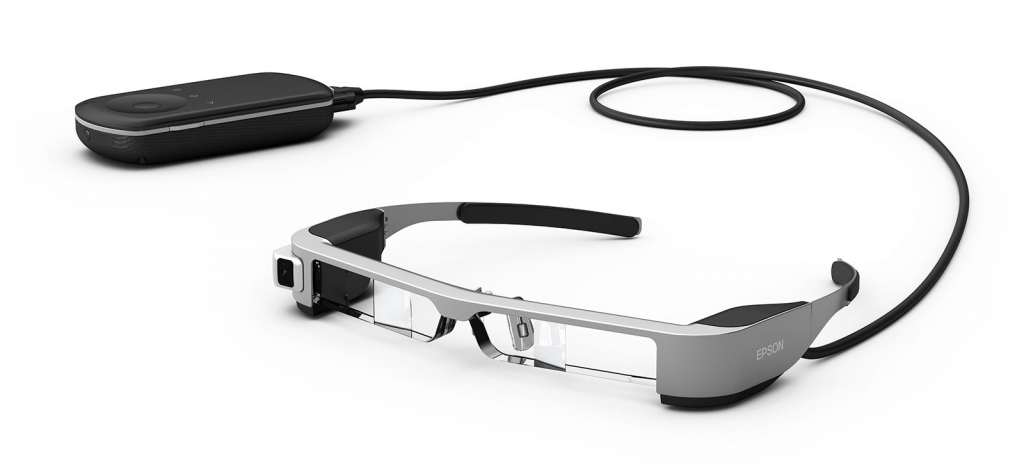Google Glasses may be a dead project, but seeing in augmented reality isn’t, and Epson’s next generation will bring the concept to more eyes.
There’s an idea in the future where we’ll all be connected to the digital world not just from the hip, but in other parts of our body, too.
Your phone is just the beginning, and while it keeps you logged in and online, the technology will eventually spread to other appendages and body parts, as the field of bionics comes alive and offers a way for you to keep connected, almost like something out of science fiction.
While that vision is a long way off, your eyes will likely be one of the first places to see a technology integration, evident not just from the way technology companies are playing with eye-glasses, but also from the work being put into smart contact lenses.
Contacts are a long way off, though, as is any sci-fi themed direct brain link-up, but digital eye-glasses are here, and have been brought to early adopters previously in Google’s “Glasses”.
And Google hasn’t been the only company dabbling, with Epson playing in the field for the past few years.
That technology can be found in its “Moverio” smartglasses, eyewear that integrates a display into its lens and a little computer, allowing your world and applications to be loaded and filtered into what you see.
This year, the technology improves in the third generation BT-300 model, with better computing hardware reliant on an Intel Atom X5, a somewhat recent generation of Android, and a 5 megapixel front-facing camera to work with on-board sensors to scan the world, integrating the digital through to the new Si-OLED screens Epson is relying on.
With the new screen technology also comes better colour and contrast, with Epson delivering what is basically a true sense of screen transparency, bringing the digital world to life in front of your eyes without losing sight of anything else.
“The BT-300 marks a major advance in technology and performance for the Moverio platform,” said Bruce Bealby, General Manager for the Consumer Division in Epson’s Sales and Marketing.
“By using Si-OLED we take advantage of reductions in power usage and weight, and improvements in response times, HD resolution, brightness and contrast. By choosing silicon rather than glass for our base wafer we achieve an even more precise pixel display,” he said.
Beyond the high-end technology being used, there are also the ways the Moverio smartglasses can be used, with augmented reality use-cases growing in number and organisations getting into what is clearly a futuristic technology.
Take Mercedes AMG, which in Formula One racing is using the technology to analyse the races and vehicles, while Manchester United looks at players to see how the coaches can improve the games.
The fact of the matter is that augmented reality can be used for a host of things, and while video games can link up with the real world – evident from how both “Ingress” and “Pokemon Go” rose to fame – anything involving frequent viewing of the real world can be ideal for augmented reality, such as looking through art galleries or museums, going clothes shopping, management of goods in various industries, security, and even watching films while you’re out and about.
Drone flying is the other serious motivation for augmented reality at the moment, because while your phone and tablet can be used to control the flying machines, viewing the path and controlling quadcopters from your eyes makes a lot of sense.
“Moverio also has several truly unique benefits, for example being the only smartglasses you can legally fly drones with in Australia as they offer pilots crystal clear, transparent first person views from the drone camera while simultaneously maintaining their line of sight with their aircraft,” said Bealby.
“This makes flying and filming safer and helps users stay in compliance with local and national aviation regulations,” he said.
Perhaps the one really strong benefit Epson’s third-generation Moverio smartglasses offer is that they’re aimed at being easily acquired by the general public, something Google’s now-discontinued Glasses were not.
Instead of being locked down to a select group of “explorers”, Epson’s Moverio BT-300 can be bought for $1199 in Australia through the Epson website, and can be found throughout the world.
Now the only hard part is trying to work out what to do with them, but with a developer kit for the Unity engine and the whole system running on Android, that shouldn’t be too hard, you just need an idea and some dabbling time.










